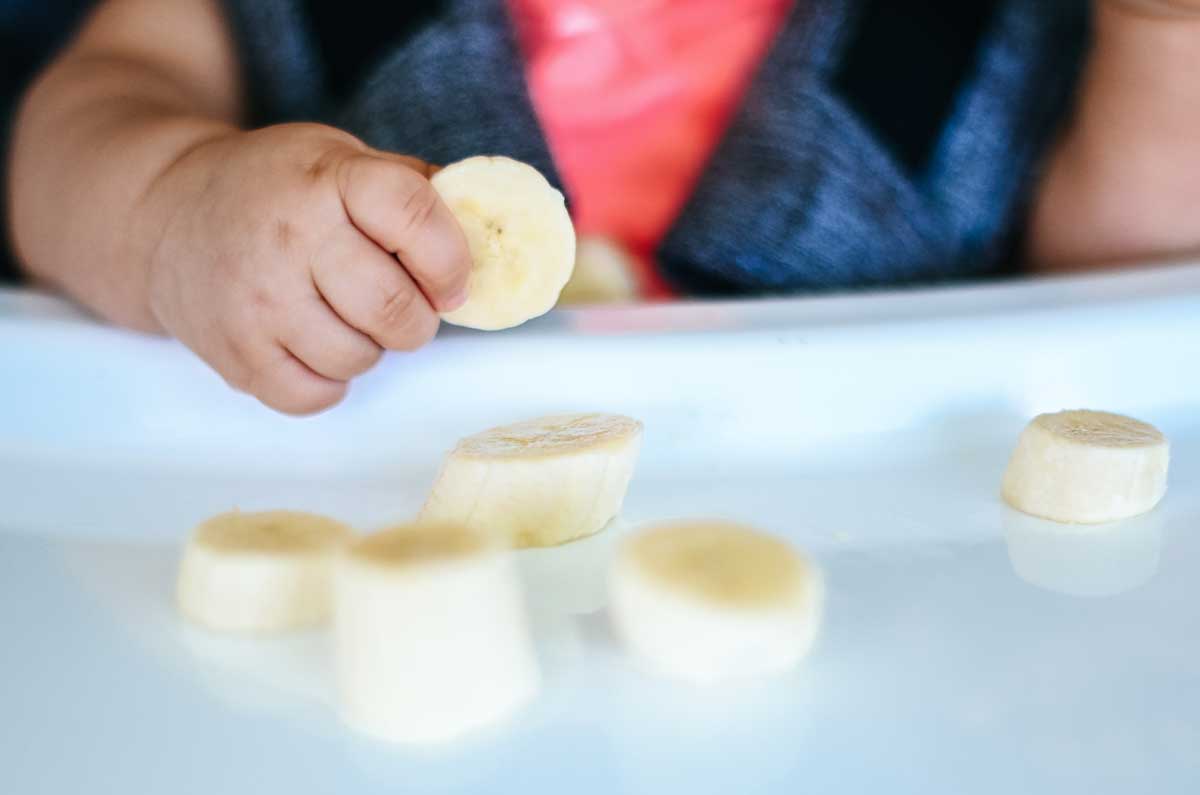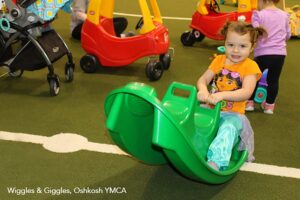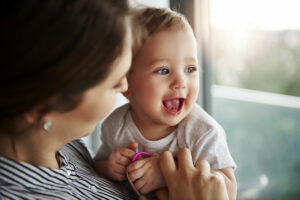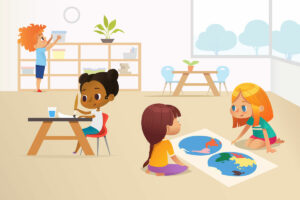Whew! You’ve made it past the first few exhausting, and cuddly, months with a newborn baby. Congratulations! As your baby begins to sit up better and show more interest in what you’re eating, you’ll probably start to wonder, how and when do I introduce solid foods? The best way to feed babies has been a topic of debate for decades, if not longer, and you’ve probably heard of some of the major options out there. Rice cereal, fruit/veggie/meat purees, and baby-led weaning to name a few. In fact, in every store, you’ll find all of these options simultaneously which only adds to the confusion. This brings up another question that may already be on your mind, which way to feed our baby is best for our family and child?
When I had my first daughter, we struggled at first to establish a sustainable breastfeeding relationship. After many weeks of hard work, tears, determination, pumping, and a small amount of donor milk, we were on a roll. As she approached the 4-6 month milestone, I knew I wanted to learn more about baby-led weaning as an option to slowly introduce solid foods while continuing to breastfeed into her toddler years, but I wasn’t exactly sure what that looked like.
Hold the phone—but what exactly is Baby-Led Weaning?
The term ‘baby-led weaning’ (BLW) gets tossed out there an awful lot these days in the baby world, but what does it actually mean? Well, the definition is honestly more simple than I had imagined. Baby-led weaning simply refers to skipping spoon-fed purees and cereals with your baby and simply allowing the baby to finger-feed him or herself when able. Yes, it’s that straightforward. However, while the concept itself is really simple, the logistics of when, how, where, what, etc. are what hung me up as a new mom and may be giving you grief as well.
As I began to dive further into the semantics of baby-led weaning, I found that my lactation consultant was an excellent resource for navigating the transition to solid foods! I have consulted with many loving lactation consultants over my past 7 years of breastfeeding journey with my three children, but in the earlier years, I didn’t think to reach out to them with logistics and questions as we slowly started the journey toward eating solid foods.
If you are finding yourself nearing that same early transition in your baby’s life and want to give baby-led weaning a try, we’ve got you covered! We consulted with Anja Farin, an International Board Certified Lactation Consultant and Certified Practical Midwife, to compile a Top Ten list of essential questions & answers you’ll need to confidently embark on your own baby-led weaning journey when your baby is ready.
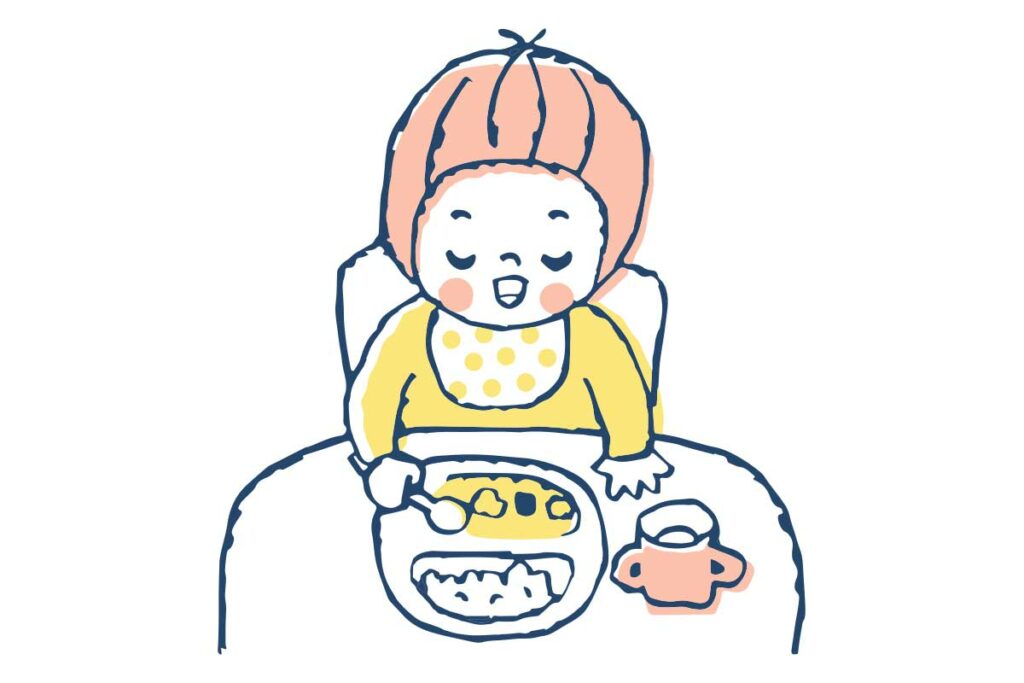
Top Ten Essential Questions & Answers To Confidently Begin Your BLW Journey with Anja Farin, IBCLC CPM
1. What are the advantages of BLW and why should I consider it with my baby?
Some of the advantages of baby-led weaning include:
- The family skips the pureed food stage where a parent or other caregiver is spoon-feeding the baby, saving the family time and also money. The most expensive sweet potato is one that is cooked, pureed, and jarred in a 2 oz container.
- The baby begins feeding themselves when they are ready and interested in food. This goes along with on-demand feeding of breast/chest milk, as you continue to allow your baby to hone their skills of recognizing their hunger and fullness cues, and you trust that your baby knows when they’ve had enough or when they express their like or dislike of particular foods.
- The baby starts their solid food journey with foods that their family normally eats and thus is immediately introduced to foods that they are familiar with the smell and taste of instead of canned or jarred combinations of foods the family doesn’t eat.
- The baby sits at the table with the family and is included in family mealtimes as a valuable part of their social development
2. What signs can I look for in my baby to know he/she is ready for solid foods?
When your baby shows interest in the foods that you are eating, by watching or trying to grab the foods from you or the table, they are likely getting ready to feed themselves. They should also be able to sit unsupported in a high chair or infant feeding chair and have the ability to grasp foods and get them in the general direction of their mouth.
3. What are some best first foods to begin with?
You can offer your baby foods that your family normally eats, in a size that baby can easily grasp or grab on to. Some good things to start with are:
- frozen peas, blueberries, or other fruits or vegetables (frozen foods can also help with the discomfort of teething)
- Hard-boiled eggs
- Carrots, cut into stick shapes and steamed until tender
- Broccoli, cut into small florets and steamed until tender
- Small pieces of roasted potato
- Avocado cut into stick-shapes
- Meat cut into a graspable shape
4. How often and where should I feed my baby?
Because solid foods are mostly about exploration and learning, be sure to nurse your baby before offering solid foods for the first year. It is easiest to simply include your baby in your regular meal and snack times. In this way, your baby will start to participate in the rhythm of the family’s life. They can have a seat at or near your dining table, in an appropriate infant feeding chair. If your baby is 6-7 months old, they can be offered solid foods once a day or even every couple of days, as they seem interested. Gradually increase the solids in your baby’s diet over the next couple of months, until by 9 months they are having solid foods no more than twice per day. Between nine and 12 months old, be sure to nurse your baby first, and if they are self-feeding at 2-3 meals per day, they will likely have a good balance of nutrition.
5. What about choking and gagging? Are these normal? I’m afraid to offer whole pieces of food.
As your baby learns about eating solid foods, it is normal that they might choke or gag. Be sure to supervise your baby at all times, and assist them in these cases as needed and as calmly as you can. Remember that as your baby grows, they will explore the world around them and sometimes encounter danger. This will help your baby to learn to cope with those experiences if you are around to calmly and quietly assist if needed. Avoid offering foods that are gooey or chewy, and hard, raw or round foods that could easily get caught in their throat.
6. When and how should I introduce water or milk? What about juice?
A baby who is receiving human milk does not require water or juice or other milk. If your baby is weaned from human milk prior to 12 months of age, appropriate infant formula should be offered. At the age of 12 months, you can introduce water as a beverage. Fruit juices contain concentrated sugars and should be diluted and also limited to no more than 3-4 ounces per day after 12 months.
7. What foods should we avoid for safety reasons?
Foods that are raw, hard, and/or round or coin-shaped should be avoided. Be sure to cut up cherry tomatoes and grapes as their shapes could get stuck in the baby’s throat. Foods like nuts, seeds, and popcorn should be avoided until your baby is old enough to chew them thoroughly at about age 4. Honey should be avoided for children under one year due to the risk of botulism. Cow milk should not be offered until after your baby is a year old, if at all.
8. How much breast milk or formula does my baby need during this transition to solid foods?
Solid foods should be seen as only a complement to your baby’s mainstay nutrition of breast milk or formula.
9. Do you have any tips for how to deal with the aftermath of a mess that BLW generates?
Babies do tend to make food exploration a full-body experience! Stripping the baby down to just a diaper, and putting a splat mat under their chair can help make the mess easier to wipe up after the “meal.” When your baby starts tossing all the food onto the floor, it’s easy to just end mealtime and clean up. Yes, your baby will toss food on the floor, and mash it into their hair. It will make for some good photo ops and memories.
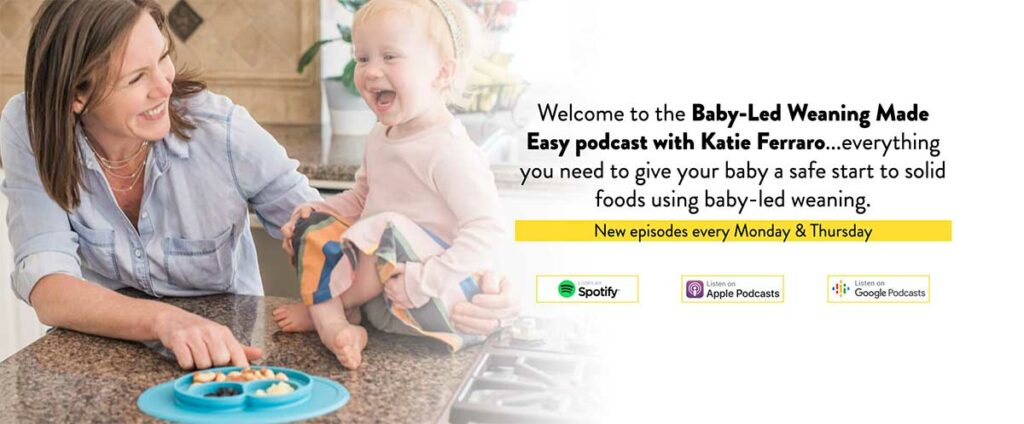
10. Where can I look for more information and/or other resources?
- Up to Date
- KellyMom
- Baby Led Weaning
- La Leche League International
- Baby Led Weaning Podcast
- The Mama Nurse
- Breastfeeding Toddlers
- Black Mothers Breastfeeding
- Breastmilk Every Ounce Counts
- Black Breastfeeding Week
Anja works with families from Sheboygan to Milwaukee and everywhere in between. Learn more about her services at anjafarin.com.
We hope these questions and answers give you the tools you have been needing to start the journey toward solid foods with your baby. Share with us any tips or tricks for success that you’ve discovered as your babies began eating foods!

